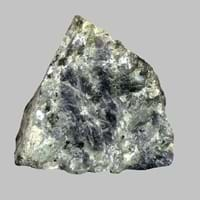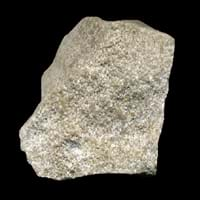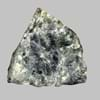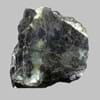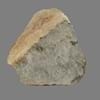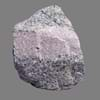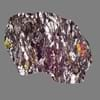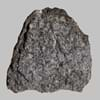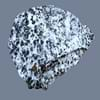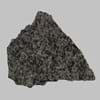Definition
Anorthosite is a granular igneous rock composed largely of labradorite or plagioclase
Oolite is a sedimentary rock formed from ooids, spherical grains which are composed of concentric layers of calcite
Discoverer
Unknown
Unknown
Etymology
From French anorthose plagioclase + -ite1
From oo- + -lite, after German Oolit. A rock consisting of fine grains of carbonate of lime
Class
Igneous Rocks
Sedimentary Rocks
Sub-Class
Durable Rock, Medium Hardness Rock
Durable Rock, Medium Hardness Rock
Other Categories
Coarse Grained Rock, Opaque Rock
Fine Grained Rock, Opaque Rock
Texture
Foliated, Glassy
Clastic or Non-Clastic
Color
Black, Bluish - Grey, Brown, Green, Grey, Light Greenish Grey, Pink, White
Black, Blue, Brown, Cream, Green, Grey, Pink, Red, Silver, White, Yellow
Durability
Durable
Durable
Appearance
Layered, Banded, Veined and Shiny
Rounded and Rough
Interior Uses
Decorative Aggregates, Floor Tiles, Homes, Interior Decoration
Decorative Aggregates, Flooring, Interior Decoration
Exterior Uses
As Building Stone, As Facing Stone, Garden Decoration
As Building Stone, As Facing Stone, Garden Decoration, Paving Stone
Other Architectural Uses
Curbing
Not Yet Used
Construction Industry
As Dimension Stone, Cement Manufacture, for Road Aggregate
Cement Manufacture, Cobblestones, Landscaping
Medical Industry
Not Yet Used
Not Yet Used
Antiquity Uses
Artifacts, Sculpture, Small Figurines
Artifacts
Commercial Uses
Creating Artwork, Curling
Creating Artwork, Jewelry, Used in aquariums
Types
Proterozoic Anorthosite and Archean Anorthosite
Not Available
Features
Generally rough to touch, Is one of the oldest rock
Available in lots of colors, Generally rough to touch, Very fine grained rock
Archaeological Significance
Monuments
Not Yet Used
Not Yet Used
Famous Monuments
Not Applicable
Not Applicable
Sculpture
Used
Not Yet Used
Famous Sculptures
Not Applicable
Not Applicable
Pictographs
Not Used
Used
Petroglyphs
Not Used
Used
Figurines
Used
Not Yet Used
Formation
Anorthosite is a phaneritic, intrusive igneous rock which is characterized by a predominance of plagioclase feldspar which is almost 90–100%, and a minimal mafic component.
Oolites form when layers of calcite are deposited around a sand grain or fossil piece and are rolled around in calm water, which makes them round.
Mineral Content
Amphibole, Clinopyroxene, Ilmenite, Magnetite, Olivine, Orthopyroxene
Calcite, Chert, Clay, Dolomite, Quartz, Sand, Silt
Compound Content
Ca, CaO, Chromium(III) Oxide, MgO, Sulfur Trioxide
Aluminium Oxide, Ca, NaCl, CaO, Iron(III) Oxide, FeO, MgO
Types of Metamorphism
Cataclastic Metamorphism, Contact Metamorphism
Not Applicable
Types of Weathering
Biological Weathering
Biological Weathering, Chemical Weathering, Mechanical Weathering
Types of Erosion
Chemical Erosion, Wind Erosion
Chemical Erosion, Coastal Erosion
Grain Size
Coarse Grained
Fine Grained
Fracture
Irregular
Conchoidal
Porosity
Less Porous
Less Porous
Luster
Pearly to Subvitreous
Pearly to Shiny
Cleavage
Irregular
Non-Existent
Toughness
Not Available
1
Specific Gravity
2.62-2.82
Not Available
Transparency
Translucent
Opaque
Density
2.7-4 g/cm3
Not Available
Specific Heat Capacity
Not Available
Resistance
Heat Resistant, Impact Resistant, Pressure Resistant, Scratch Resistant, Wear Resistant
Heat Resistant, Wear Resistant
Deposits in Eastern Continents
Asia
Not Yet Found
Brunei, India, Indonesia, Malaysia, Singapore, Thailand, Vietnam
Africa
Not Yet Found
Cameroon, Chad, Ghana, Kenya, Malawi, Sudan, Tanzania, Togo, Zambia, Zimbabwe
Europe
Bulgaria, France, Germany, Greece, Hungary, Italy, Latvia, Lithuania, Malta, Poland, Portugal, Romania, Slovenia, Spain, Sweden, The Czech Republic
United Kingdom
Others
Not Yet Found
Not Yet Found
Deposits in Western Continents
South America
Bolivia, Colombia
Colombia
Deposits in Oceania Continent
Australia
Central Australia, South Australia, Western Australia
Adelaide, New Zealand, Queensland, Tonga, Victoria, Yorke Peninsula
All about Anorthosite and Oolite Properties
Know all about Anorthosite and Oolite properties here. All properties of rocks are important as they define the type of rock and its application. Anorthosite belongs to Igneous Rocks while Oolite belongs to Sedimentary Rocks.Texture of Anorthosite is Foliated, Glassy whereas that of Oolite is Clastic or Non-Clastic. Anorthosite appears Layered, Banded, Veined and Shiny and Oolite appears Rounded and Rough. The luster of Anorthosite is pearly to subvitreous while that of Oolite is pearly to shiny. Anorthosite is available in black, bluish - grey, brown, green, grey, light greenish grey, pink, white colors whereas Oolite is available in black, blue, brown, cream, green, grey, pink, red, silver, white, yellow colors. The commercial uses of Anorthosite are creating artwork, curling and that of Oolite are creating artwork, jewelry, used in aquariums.
